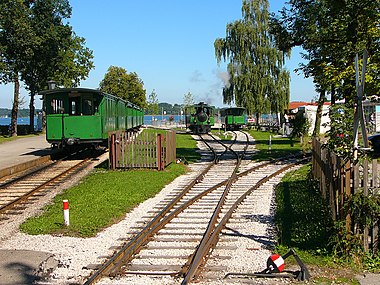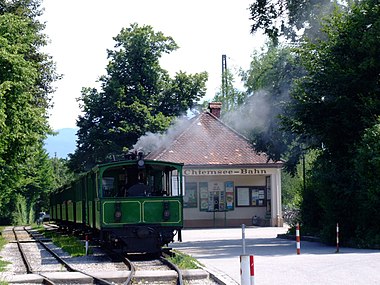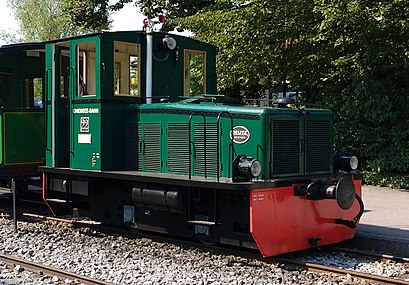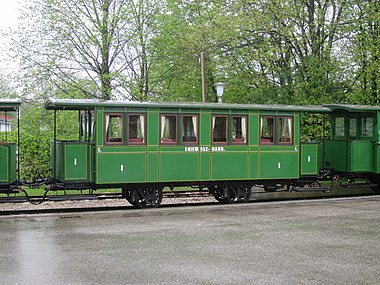| Chiemsee-Bahn Chiemsee railway | |||
|---|---|---|---|
 A Chiemsee-Bahn train in May 2007 | |||
| Overview | |||
| Termini |
| ||
| History | |||
| Opened | July 9, 1887 [1] | ||
| Technical | |||
| Line length | 1.9 km (1.2 mi) [2] | ||
| Track gauge | 1,000 mm (3 ft 3+3⁄8 in) metre gauge | ||
| |||
The Chiemsee-Bahn is a meter gauge railway line in Prien am Chiemsee, Germany. It is one of the world's last steam tramways, [3] and the oldest continuously operated steam tramway in regular operation. [4]




